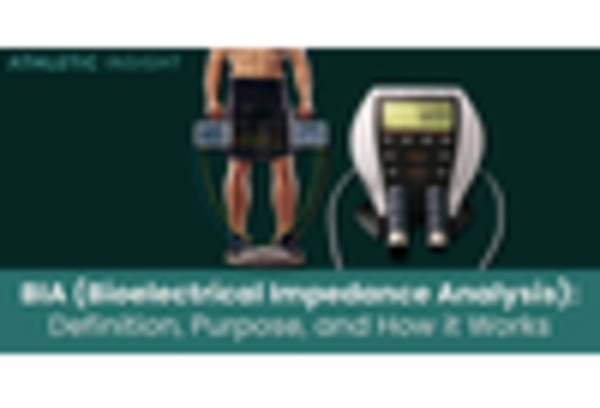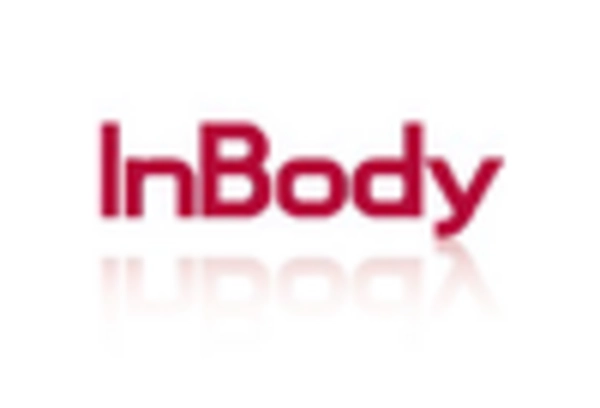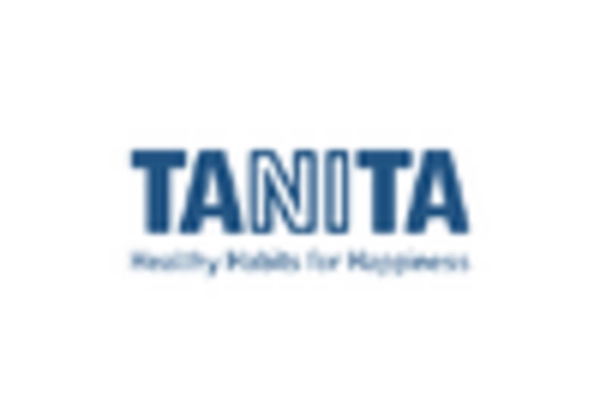Rising Obesity Rates
The increasing prevalence of obesity in the US is a critical driver for the body composition-analyzers market. According to the CDC, the obesity rate among adults has reached approximately 42.4%, highlighting a growing need for effective monitoring tools. Body composition analyzers provide essential insights into body fat, muscle mass, and overall health, enabling individuals to make informed lifestyle choices. This trend is likely to propel demand for these devices, as healthcare professionals and fitness enthusiasts seek reliable methods to track and manage body composition. The market is expected to witness substantial growth, with projections indicating an increase in revenue of over 10% annually as more consumers prioritize health and fitness. Consequently, the body composition-analyzers market is positioned to benefit significantly from this rising concern over obesity.
Growing Fitness Industry
The expansion of the fitness industry in the US is a significant driver for body composition-analyzers. With an increasing number of gyms, fitness studios, and wellness centers, there is a heightened demand for tools that assist in tracking fitness progress. Body composition analyzers are becoming essential equipment in these facilities, as they provide valuable data for trainers and clients alike. The fitness industry is projected to grow at a CAGR of around 8% over the next five years, which could lead to a corresponding increase in the adoption of body composition analyzers. This growth indicates that fitness professionals are recognizing the importance of body composition metrics in achieving health and fitness goals, thereby fueling market demand.
Technological Integration
The integration of advanced technologies into body composition-analyzers is significantly transforming the market landscape. Innovations such as bioelectrical impedance analysis (BIA) and dual-energy X-ray absorptiometry (DEXA) are enhancing the accuracy and reliability of these devices. Furthermore, the incorporation of artificial intelligence and machine learning algorithms is enabling more personalized health assessments. As consumers increasingly demand precision in health monitoring, the body composition-analyzers market is likely to experience a surge in adoption. The market value is projected to reach approximately $1 billion by 2026, driven by these technological advancements. This trend suggests that manufacturers who invest in R&D to enhance their product offerings may gain a competitive edge in the evolving market.
Health and Wellness Trends
The rising trend is significantly influencing the body composition-analyzers market. As consumers become more health-conscious, there is a growing interest in understanding body composition metrics. This trend is reflected in the increasing sales of health-related products, with the wellness market expected to reach $4.5 trillion by 2026. Body composition analyzers are integral to this movement, as they empower individuals to monitor their health effectively. The demand for these devices is likely to rise as more consumers seek to incorporate health tracking into their daily routines. This shift towards proactive health management suggests that the body composition-analyzers market will continue to expand, driven by consumer awareness and demand for personalized health solutions.
Increased Preventive Healthcare
The shift towards preventive healthcare is becoming a vital driver for the body composition-analyzers market. As healthcare costs continue to rise, there is a growing emphasis on preventive measures to mitigate health issues before they arise. Body composition analyzers play a crucial role in this paradigm by providing individuals with insights into their health status, enabling early intervention. The market for preventive healthcare is projected to grow significantly, with estimates suggesting an increase of over 15% in the next few years. This trend indicates that healthcare providers and consumers alike are recognizing the value of monitoring body composition as a preventive strategy. Consequently, the body composition-analyzers market is likely to benefit from this shift, as more individuals seek to take control of their health.

















Leave a Comment